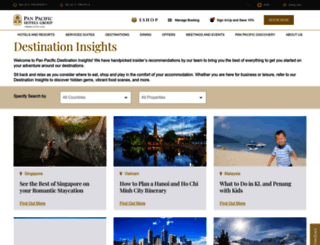International Travel Tips | Pan Pacific Destination Insights
Page Load Speed
4.8 sec in total
First Response
452 ms
Resources Loaded
4.1 sec
Page Rendered
194 ms

About Website
Welcome to blog.panpacific.com homepage info - get ready to check Blog Pan Pacific best content for Singapore right away, or after learning these important things about blog.panpacific.com
Through Pan Pacific Destination Insights, you will have access to various international travel tips ahead of your holiday.
Visit blog.panpacific.comKey Findings
We analyzed Blog.panpacific.com page load time and found that the first response time was 452 ms and then it took 4.3 sec to load all DOM resources and completely render a web page. This is a poor result, as 70% of websites can load faster.